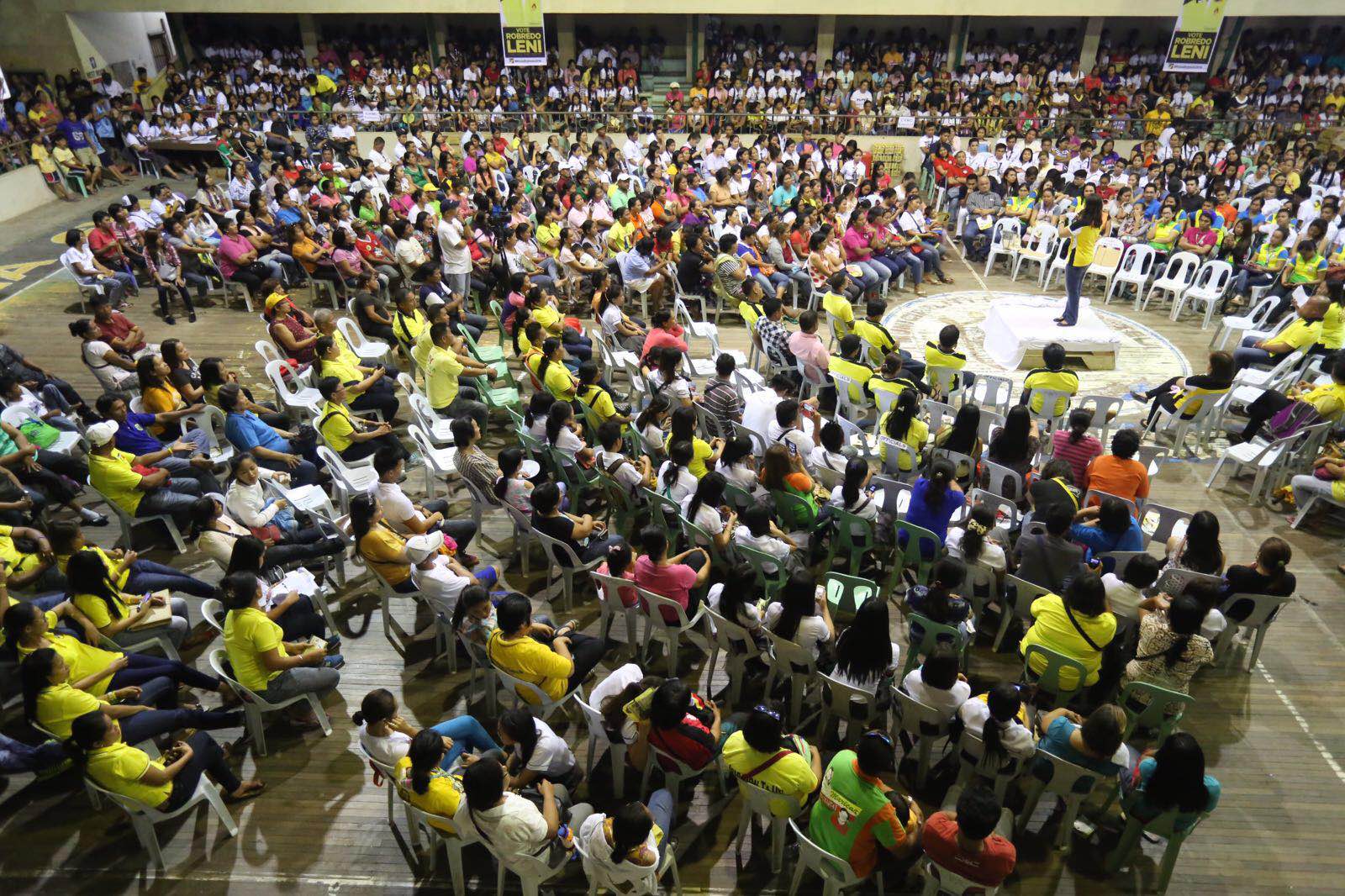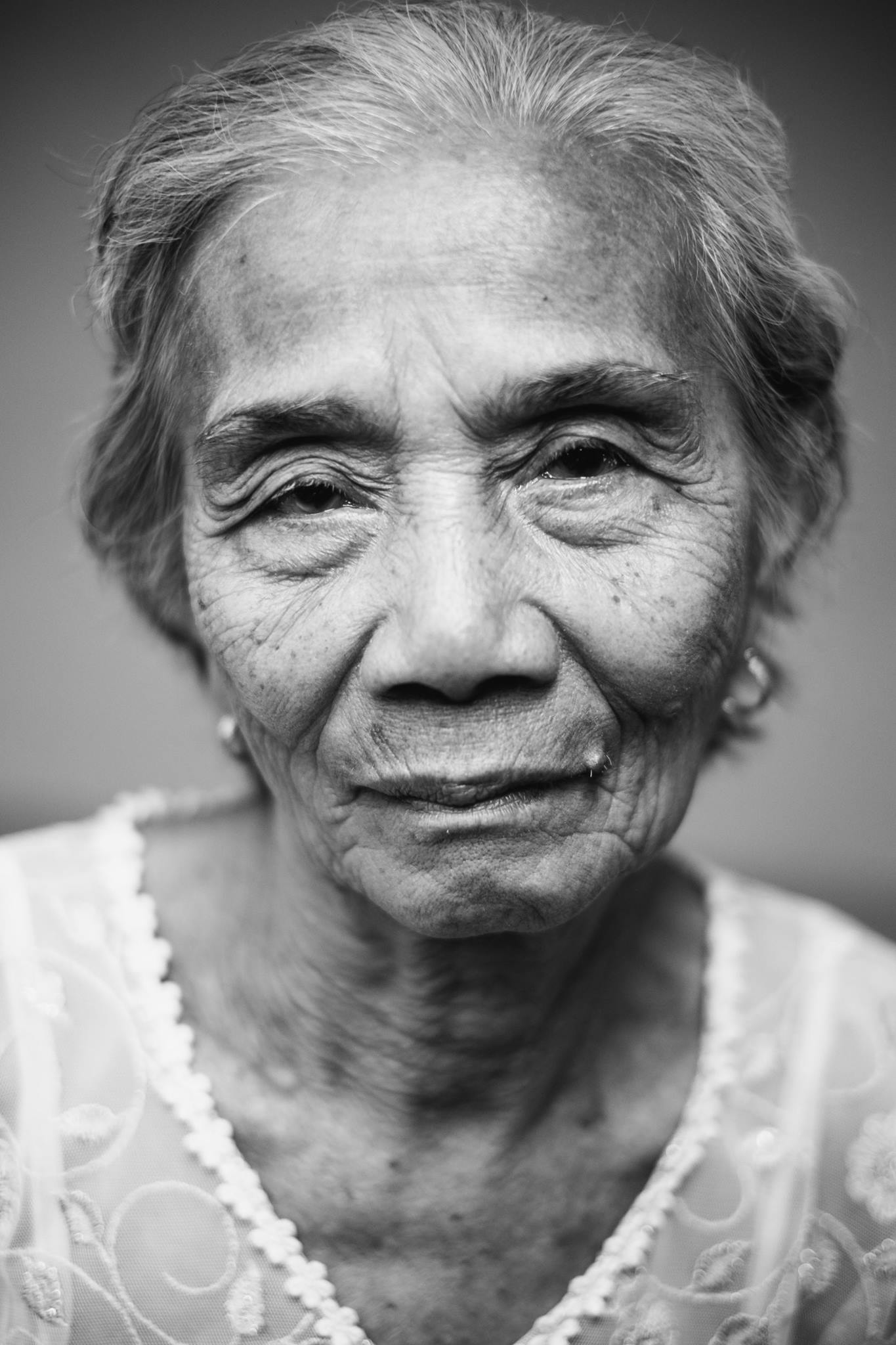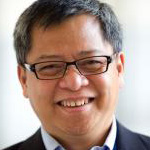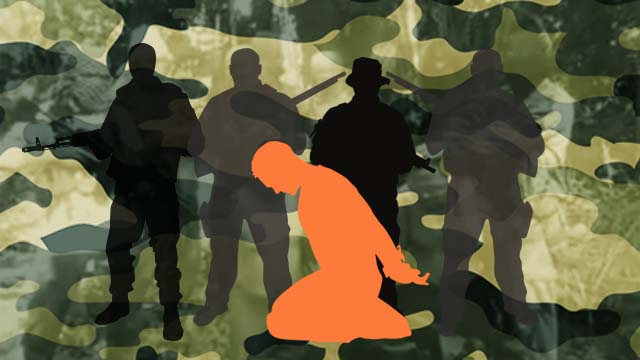
MANILA, Philippines – On February 8, 2015, I resigned myself to a summer of yellow.
It was raining in Roxas City that afternoon, as workers, project coordinators, campaign staff members and production specialists buzzed around the Capiz gymnasium to prepare for the Liberal Party (LP)’s national campaign kick off the next day. If the yellow tarpaulins with the wide smiles of candidates in yellow shirts and the yellow stage weren’t enough, the next day, there would be an abundance of yellow confetti.
Covering the ruling party’s 2016 campaign has been… interesting.
My distaste for its party color aside (it’s nothing personal – yellow just never works for me), there’s the seemingly endless cycle of stump speeches, motorcades, hand raising, running-around-to-catch-a-candidate, and running around some more to get to the next sortie.
Yellow confetti makes it official. The "Daang Matuwid" coalition: #PHvote#rstreampic.twitter.com/slnPH0BaKW
— Bea Cupin (@beacupin) February 9, 2016
To cope with the chaos, you try to find a rhythm – a sense of normalcy and predictability, if you will, in the odd and unpredictable world of Philippine politics.
With a little over 20 days left in the campaign period, I’ve definitely found that rhythm.
So if, unlike me, you’ve had more important things to do than run around the country to follow the LP’s candidates, here are a few things that are staple – or even musts – in their sorties around the country:
Long waits, buwis buhay moves. The past few years have taught me that journalism entails a lot of waiting. It applies when covering campaign sorties as well.
Standard-bearer Manuel Roxas II and running mate Camarines Sur Representative Leni Robredo (and their campaign staffs) generally make sure they’re on time for sorties and engagements, although 30-minute to 1-hour delays are sometimes unavoidable.
But the waiting also happens even after the candidate enters the venue or after the last speech is delivered.
Roxas, for instance, always makes it a point to mingle with the crowd – be it in covered courts, cordoned-off streets, or gymnasiums – before he even sets foot on stage.
That’s easily 30 minutes or more of waiting while he goes around to shake hands, talk to, and take selfies with supporters who’ve been in the venue hours ahead.
WATCH: Mar Roxas in Muntinlupa. Last stop in a 3-city trip around southern Metro Manila. https://t.co/TKe7E7qrom
— Bea Cupin (@beacupin) March 1, 2016
It also means having to cross barriers – literal ones included. I once told one of Roxas’ aides that their boss is fond of “buwis buhay (risky)” moves. He doesn’t think twice about jumping over metal barriers, leapfrogging gymnasium barricades, and wading through crowd of supporters.
Working the crowd also means you’re pushed and pulled in all sorts of directions. Untucked shirts, ruffled hair, and scratches on his arms and even face are all in a day’s campaign work for Roxas.
Waiting is especially a requirement when the sortie includes party chairman President Benigno Aquino III. Security protocol entails you need to be in the venue at least an hour before he arrives. It’s a pain but also a welcome break when you’re tired and sleep-deprived.
Of speeches, promises and the 4Ps. While most politicians promise specific infrastructure or development projects tailor-fit for the province they’re campaigning in, that’s not usually the case for Roxas and Robredo.
Their promises revolve around their platform (freedom from fear, freedom from hunger, and the freedom to dream). Robredo herself admitted as much during a recent speech in Pasay City, where she assured coconut farmers that they would prioritize the distribution of the controversial coco levy fund. Roxas made the same promise during his own speech.
It might seem odd to some but if you’ve trailed the ruling party closely, it’s obvious why.
Theirs is a campaign that is anchored on the continuation of “Daang Matuwid,” the Aquino administration’s tagline for its anti-corruption, transparency, and good governance platform. Its flagship programs and achievements – the popular Pantawid Pamilyang Pilipino Program (4Ps), PhilHealth expansion, infrastructure projects, economic growth – are, in a way, the ruling party’s campaign promises.
Aquino, in his speeches, always makes it a point to enumerate gains in a particular province or area, particularly infrastructure projects funded by the national government.
The program flow for most LP rallies is the same in most sorties. After Senate bets get their time on stage, a local politician or a 4Ps beneficiary usually goes onstage to introduce Robredo (or her stand-ins, typically daughter Aika or Patricia).
After Robredo or one of her proxies delivers a speech, the President is introduced. It’s the President himself who introduces his anointed candidate, Roxas.
If Aquino isn’t there, it’s usually the highest-ranking local ally – a congressional representative, governor, or mayor – who introduces Roxas as “the next president of the Philippines.”
The stump speeches. The tandem attends at least 3 rallies – usually in succession – in one day’s worth of campaigning. Robredo’s stump speech has changed little since the campaign season began.
The Camarines Sur representative’s speech is mostly a retelling of her life – from her “political reawakening” towards the end of martial law, how she met the late Jesse Robredo, how she struggled juggling life as a mother and a law student, why she chose to be a lawyer for the poor, her husband’s death, and the difficulties of running against a well-entrenched politician in her province.
Her speeches are peppered with quick anecdotes from her life – how she had to ride a habal-habal while 6 months pregnant just to reach a fishing community and why she had to quit her job in the Public Attorney’s Office (she’d end up representing the jueteng kubradors her own husband had apprehended).
“Laylayan” (fringes of society) has become a word ubiquitous in Robredo’s speeches. She does, after all, present herself as a candidate who is most familiar with the life of those most in need.

A few other things stand out.
Robredo always makes it a point to emphasize the bond between her husband and Roxas, whom she’s jokingly referred to a Jesse’s second wife. Roxas gets the most mentions when she starts talking about the plane crash that claimed Jesse’s life. Then transportation secretary, Roxas oversaw retrieval operations and was the first Cabinet official who relayed the bad news to Robredo.
Roxas’ stump speech is a little less personal than his running mate’s. He sometimes starts by hollering “aylabyu (I love you)” to the more enthusiastic members of the crowd, even before he begins greeting local and national officials in the venue.
Depending on the crowd, Roxas talks about the Philippines of the past before trumpeting instances of improvement under “Daang Matuwid” – the 4Ps, universal health care, infrastructure projects, and the like.
His has evolved several times since the official campaign period began. A little over a month into the 90-day campaign period, audience interaction became key for Roxas’ speeches.
In almost all of his rallies, he picks out a woman – typically a 4Ps beneficiary and almost always one of the more talktative and enthusiastic ones from the crowd – and invites her to come on stage with him.
Roxas asks about the woman’s life, her struggles, and her motivations for pushing forward.
There have been times when Roxas’ guest of honor steals the show from the standard-bearer himself. In General Santos City, Lelita Dablo brought the house down when she unabashedly started berating Vice President Jejomar Binay for failing to answer allegations of corruption against him.
"Lelita, dalhun kita sa bilog na pilipinas para ma istorya mo sa bilog sang Pilipinas (Lelita I'll bring you all over the Philippines so you can tell the entire country),” Roxas quipped after a long and impassioned speech from Dablo.
During a recent rally in Mandaue City, Cebu, a woman brought along with her a notebook and a pen so she could get Roxas’ autograph. The same notebook and pen collected autographs from Robredo’s daughter Aika and the rest of the LP stalwarts present during the rally.
The women he picks out from the crowd, Roxas would later say, represent the typical Filipino – one who works hard and perseveres for her family, in the hopes of a better life.
Jokes, and then some. Rallies usually stretch for hours, starting even before Roxas or Robredo arrive and sometimes, ending long before they’d left.
It’s not a surprise that the LP’s candidates make it a point to crack a joke or 2 (or 3, or more) during their speeches.
Roxas’ most well-received jokes poke fun at himself. He jokes about flying in to the province he’s visiting because, as a Capizanon, he doesn’t even need an airplane or helicopter (the joke here being: Capiz is known for its aswangs).

Another joke after he thanks the crowd for their warm – and sometimes rowdy – welcome involves wife Korina Sanchez. “What I’m worried about now is how I’ll explain the lipstick mark on my cheek when I get home,” Roxas would quip, to the delight of the audience.
Senate bet and former TESDA chief Joel Villanueva likes telling a joke about 3 friends stuck on an island and who are granted 3 wishes. The first two wish to go back home while the third, because he misses his two friends so much, wish for them to return to the island.
Reelectionist Senator Ralph Recto likes teasing the crowd, telling them that his wife, Batangas Governor and “Star for All Seasons” Vilma Santos prepared food for the crowd… at their home back in Lipa City.
COOP-NATCO Representative and Senate Bet Cresante Paez would say that actor Tom Cruise cautioned him against his 2016 run, because it’s “Mission Impossible.” Paez would counter this by saying that with him, everything is “Paez-ible.”
Another Senate bet, former Pampanga governor Mark Lapid likes teasing the crowd, asking them if he’s better looking than his father, former movie star and incumbent Senator Lito Lapid. Once he gets the crowd to commit that he’s the better-looking one, his father arrives on cue, to the delight of the audience (admittedly, it’s usually the lolas and titas who get a kick out of Lito Lapid’s cameo.)
President Aquino himself cracks jokes during sorties. It’s a long joke that deserves to be quoted in verbatim:
Gusto ko i-kwento sa inyo. Minsan po’y nauwi ako sa amin sa Tarlac. Ibinida sa akin na mayroon kaming isang retiradong kababayan na may alagang kalabaw. ‘Yung kalabaw po hindi naman niya ginagamit sa sakahan. Ginawa ho niya nagmistulang aso. ‘Yun bang kada lalakad siya kasama niya ‘yung kalabaw. Sama nang sama sa kanya. Mula noong bata hanggang lumaki.
(I have a story to tell you. One time I went home to Tarlac. Locals would brag to me that one of the retirees there has a pet carabao. The carabao isn’t used on the fields but is treated like a pet dog. He’d walk around with the carabao by his side, from its childhood to adulthood.)
Dumating ho isang panahon – retirado na siya e – kailangan siyang pumunta ng Manila. Mayroong mga papeles ho na kailangan niyang kumpletuhin, i-submit para sa kanyang mga pensyon at benepisyo. Pumunta ho siya doon sa aming terminal ng bus. Sasakay ng bus. Sabi ng konduktor: Ay sandali ho, sandali ho pangtao lang ho itong bus. Bawal ho iyang kalabaw. Sabi ho ng aking kababayan: Ay. Pabayaan mo siya alam niya gagawin niya.
(One time, he had to go to Manila because there was paperwork he had to finish and submit for his pension and benefits. He went to the bus terminal, ride the bus and the conductor told him: Hold on, the bus is only for people. Your carabao can’t ride. My province mate said: Oh, let him be. He knows what to do.)
Ngayon ho, iba ho talaga yung kalabaw namin sa Tarlac 'no. Umalis na po ‘yung bus sa terminal. ‘Yung kalabaw ho sumunod. Sabi na naman ng konduktor: Manong, ‘yung kalabaw niyo sumusunod. Baka maakisdente o makaaksidente. Pabayaan mo ‘yan, aral ‘yan, alam niya ang gagawin niya.
(Now the carabaos in Tarlac are one of a kind. The bus let the terminal and the carabao trailed behind. The conducted said: Your carabao is following us. He might get into an accident or cause an accident himself. The man said: Let him be, he knows what to do.)
So ang ginawa ho ng driver, syempre nasa highway na pinaspasan, para maiwan na ‘yung kalabaw baka umuwi na lang. 30 kilometro, 40 kilometro ang takbo. Nandoon sumasabay pa ‘yung kalabaw. Pinaspasan lalo nung driver. Ginawa raw po niya 70 kilometers na ang takbo. Pagtakbo hong ganoon, nakita po niya tingin siya sa rear view mirror niya ‘yung kalabaw, nakalabas ‘yung dila.
(So the driver, because he was on the highway, drove faster so the carabao would finally go home. He drove at 30 kilometers per hour, then 40 kilometers per hour. But the carabao was still following them. The driver drove even faster, at 70 kilometers per hour. While he was cruising at that speed, he saw the carabao from the rear view mirror, his tongue sticking out.)
Sabi niya doon sa may-ari: Kuya, ‘yung kalabaw po niyo nakalabas na ang dila mukhang pagod na. Ah, ganoon ba. Saan ba nakaturo ‘yung dila. Tingin ulit ‘yung driver: Ay sa kaliwa po. Ay mag-iingat ka ng konti ha, baka oovertake na ‘yan.
(The driver told the carabao’s owner: Kuya, your carabao’s tongue is sticking out. I think he’s tired. The man said: Is that so? Where is his tongue pointed towards? The driver looked again and said: To the left. The man answer: Be careful, he might overtake us.)
Suffice to say, tito jokes abound in LP sorties.
Songs, chants, and yellow confetti. When you’re trailing a national candidate, you tend to notice the littlest things about that candidate – his mannerisms, quirks, favorite shoes, even the way he drinks his coffee (it’s Nescafe instant coffee and stevia for Roxas).
Campaign kick-off BTS: Legislators can be fanboys too pic.twitter.com/PnRpoRTsYt
— Bea Cupin (@beacupin) February 13, 2016
You also tend to drown in the candidates’ jingles, hymns, songs.
LP rallies – or at least the bigger ones – feature performances from Frenchie Dy, Jett Pangan, and a handful of other performers.
But the main attraction is always Noel Cabangon, with his “Tribute to Daang Matuwid.”
The song plays in the background as Aquino, Roxas, Robredo and local bets take turns raising each others’ hands onstage.
Cue: more yellow confetti.
Jingles are another weekly (or – sadly – daily) LSS (last song syndrome) for embedded reporters. Roxas and Robredo have at least 5 jingles between them.
There’s a painfully catchy “Roxas-Robredo” jingle played during motorcades and visits to markets, a shorter Roxas jingle, Robredo’s “kababaihan” jingle (that’s usually played during her “Zumba events”), and another Robredo jingle that is played when she arrives or shortly before she speaks.
True, these can get repetitive. But I guess that’s the challenge for every campaign reporter – to find the unique and the interesting in the daily grind.
One thing's for sure, though. As soon as May 9 rolls by, I’ll do my best to stay away from anything yellow for a while. – Rappler.com

 With so much of Southeast Asia linked to China through trade and tourism, the latest news out out of the Manila-headquartered Asian Development Bank should give many in the region good reason to pause.
With so much of Southeast Asia linked to China through trade and tourism, the latest news out out of the Manila-headquartered Asian Development Bank should give many in the region good reason to pause. 
 A quick thumbnail: Grace Poe sounds like a street evangelist begging public utility commuters for loose change; Roxas, a little boy tugging at the hemline of his mother’s skirt; Miriam, well nobody but same old feisty Miriam; and Binay is, uhm, mukhang guilty (looks guilty)?
A quick thumbnail: Grace Poe sounds like a street evangelist begging public utility commuters for loose change; Roxas, a little boy tugging at the hemline of his mother’s skirt; Miriam, well nobody but same old feisty Miriam; and Binay is, uhm, mukhang guilty (looks guilty)?
 Dear Mayor Duterte,
Dear Mayor Duterte,






 My social media feed is spewing out post after post of venom about Mayor Rodrigo Duterte’s
My social media feed is spewing out post after post of venom about Mayor Rodrigo Duterte’s 
 There are many stories that will be told after over 160 nations – the Philippines included –
There are many stories that will be told after over 160 nations – the Philippines included – 


 The country needs a strong leader.
The country needs a strong leader.
 Dear Sir or Madam,
Dear Sir or Madam,





